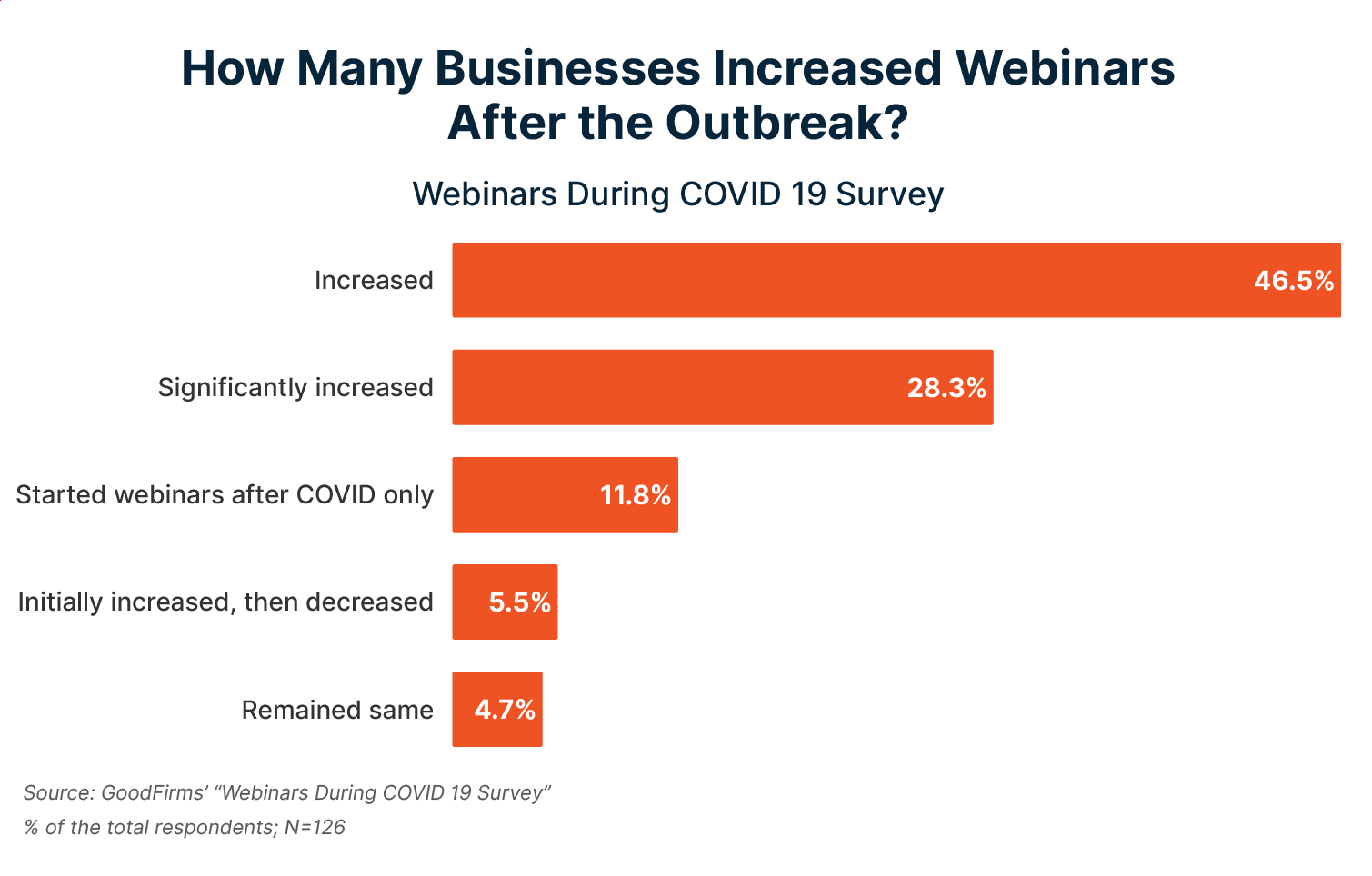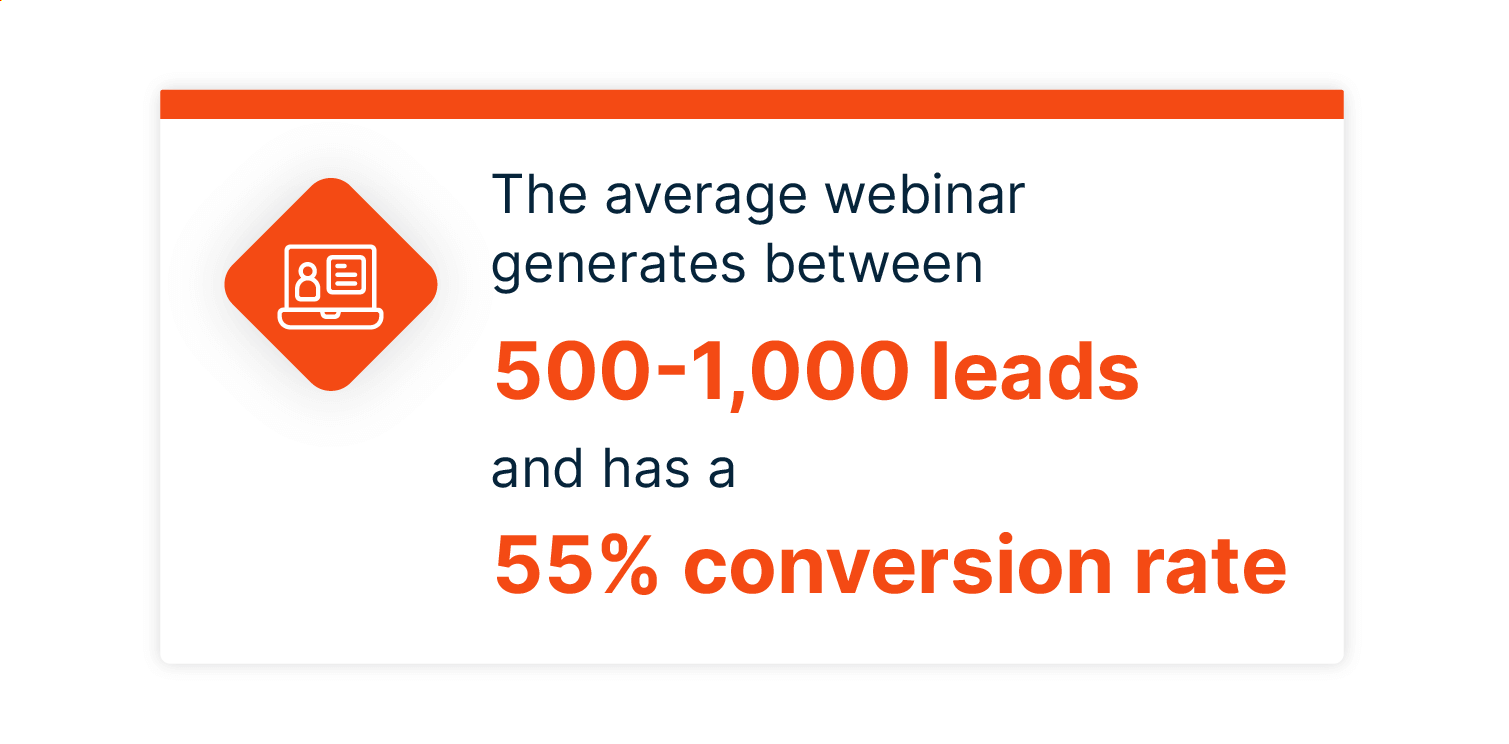
The 2024 Ultimate IT Webinar Guide
Article Summary
In 2024, IT webinars emerged as a powerful tool for connecting with customers, promoting products, and generating high-quality leads. These virtual events combine the convenience of online interactions with the personal touch of in-person meetings, offering a unique platform for engagement. The rise of remote work and the unavailability of live events during the COVID-19 pandemic significantly boosted the popularity of webinars. Today, over 67% of marketers are planning to increase their use of webinars. These events are not just about sales; they also serve as platforms for building relationships, introducing new products, answering customer queries, educating leads, and even conducting market research. For instance, webinars can be used to discuss challenges that a new product addresses or to establish oneself as an industry leader. With an average of up to 1,000 leads generated per webinar and a 55% conversion rate, it's evident that webinars are reshaping the landscape of IT marketing.
IT webinars combine the convenience of virtual interactions with the connectivity and personalization of in-person meetings. Together, you have a platform for connecting with customers, promoting products, and generating quality leads.
Explore how webinars changed in 2023 and how you can use them in your business strategies.
Key Takeaways:
- Tech webinars are virtual IT events for meeting with customers or employees
- COVID-19 caused many businesses to increase their use of webinars
- Webinars help you build relationships with customers, generate new leads, and convert prospects
🤫 PS: Looking for pricing on Tech webinars? Get a price list here
What Is a Webinar?
A webinar is a virtual event held through a video platform. It requires a host, speaker, and attendees. The attendees will sometimes be able to interact with the host by asking questions, downloading resources, or posting comments.
Webinars allow hosts to share images, slide shows, and videos during their presentations to keep the audience engaged. Because of the flexibility and convenience of modern webinars, they’re quickly becoming a staple in many content marketing strategies. Today, over 67% of marketers plan to increase their webinar use.
What Changed for Tech Webinars in 2023?
Webinars saw a massive jump in popularity during COVID-19, with nearly half of marketers increasing their use of this format due to the rise of remote work and the unavailability of live events. However, 44.5% of businesses plan to permanently replace in-person meetings or adopt a hybrid model even with many restrictions lifted and live events coming back.

Why Should You Use IT Webinars in Your Business?
Technology webinars complement your tech marketing and sales strategies while adding a personal touch to your interactions. When you incorporate webinars into your business, you’ll see an increase in revenue. However, not all revenue will come directly from conversions. Some benefits are indirect but have a greater lifetime value.
Explore seven of the top benefits of using tech webinars and how to incorporate them into your current strategies.
1. Build Relationships with Customers
Investing in a relationship with your customers will increase your retention rates. Although it’s very time-consuming to get to know customers, personalize their experience, and interact with leads, it’s essential for converting customers in 2024.
The extra time for relationship building is necessary to build a solid foundation for a longer relationship with the customer rather than just making a quick sale. Since 65% of revenue comes from loyal customers, relationship building has a greater lifetime value than other conversion tactics.
2. Introduce New Products
Unfortunately, about 40% of companies didn’t meet their sales goals in 2020. However, 64% of sales teams that used remote methods like webinars to promote and sell products not only met but exceeded their goals.
You can use webinars as a remote sales platform for introducing and selling your products. It allows your viewers to engage with you during your presentation, similar to how they might engage with a sales representative in person. However, it’s more personal than only using email or phone sales techniques because your viewers see a face and have more opportunities to interact and receive answers to any questions they have about your products.
3. Answer Customer Questions
About 81% of webinars have a Q&A session. Q&A sessions allow the audience to provide feedback, feel heard, and receive answers. Marketers also use Q&As to address the pain points of their audience.
If you have a smaller webinar audience, you can perform your Q&A live by having your audience type questions in the comments space in the webinar platform.
However, larger webinars or those with a stricter time restraint might want to have a question submission option on their webinar sign-up landing page. This allows the audience to submit questions before and even during the webinar. Then the host can sort the questions and focus on the most relevant ones during the event.
4. Educate Leads on Your Industry
Webinars are a means for conveying a message. That message doesn’t always have to be sales-focused. Most of the time, your webinar might have an alternative goal, like educating your audience, addressing pain points, or creating demand for a product.
For example, webinars can help you if you come out with a new product most of your audience doesn’t understand. Through the live event, you can discuss challenges that the new product would solve. You can also establish yourself as an industry leader by presenting thought leadership topics that build trust with your audience.
5. Generate New Quality Leads
About 85% of B2B marketers agree that lead generation is the most important goal in IT marketing. However, it’s also one of the greatest challenges since you need to generate quality leads if you want those prospects to eventually purchase a product.
The average webinar can generate up to 1,000 leads, with 73% becoming qualified leads. Webinars also have a 55% conversion rate.
They’re effective for lead generation because attendees must exchange their contact information to attend the event, which allows you to track and nurture your audience. You can also attract a target audience to the webinar through a customized landing page and industry-specific keywords. This ensures most of those who sign up are serious about your topic and brand.

6. Convert Leads into Customers
Over 60% of businesses host a webinar to convert the viewers. The host will use those valuable 40 minutes they have their prospect’s attention to lead them through the complete sales cycle.
A conversion webinar will differ from other webinars because your audience must remain active. If they aren’t engaged, they won’t complete the conversion action at the end of the webinar.
Highly engaging conversion webinars incorporate:
- Audience participation
- Rewards
- Questions and answers
- Engaging graphics
7. Perform Market Research
Market research helps you understand your audience and create marketing strategies based on customer feedback. However, collecting data from customers can easily take weeks or months. For example, if you send out an email survey, you’ll receive a trickle of responses over several days.
Webinars offer a solution when you need a high response rate and quick feedback. In a webinar setting, you can ask questions and receive real-time responses. Some platforms offer additional features like polls that make market research more convenient.
Generate More Leads with Webinar Content
If you want to increase your revenue, incorporate webinars in your marketing and sales strategies. You’ll generate more quality leads and see a higher conversion rate.
Contact us to learn about our webinar and lead generation services for tech companies.